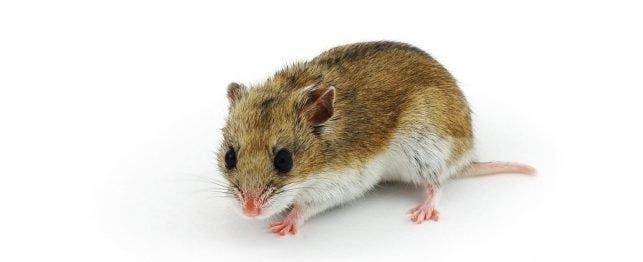
Choosing a Chinese Hamster
Popularity has been fleeting for Chinese hamsters, but they make wonderful pets and shouldn’t be forgotten.
Native to northern China and Mongolia, the Chinese hamster has been in the United States since at least 1919 but was not widely kept even in medical laboratories due to the difficulty in breeding. In the 1970s, after the first appearance of the Dwarf Russian, hamster, Chinese hamsters came into vogue as “the other small hamster,” but they have fallen out of fashion in recent years.
Appearance and Behavior
The Chinese hamster is about 9 centimeters long. He is “mouselike” with a short, slightly prehensile tail, and his body and jaws are narrow. The female is smaller than the male. They can be timid, although they do well in pairs or small colonies. They do not become more aggressive or shorter-lived if kept on their own but they will be less often out and about. They can be easier to pair up as adults than other hamsters, but some females do take an intense dislike to some males and may kill them.
In general, Chinese hamsters are a grayish brown, with a conspicuous black dorsal stripe. The belly is whitish. Juveniles tend to be rather grayer than the adults. In the early 1980s, a mutation of this species occurred in a university in the United Kingdom. This white-spotted variety has a normal background color, but is patched with various amounts of white over his back. So far this is the only mutation to have occurred.
Housing
Because of their thin bodies, Chinese hamsters can be a problem to house as they tend to be able to squeeze through the bars of the cages designed for most other hamsters. They are best kept in a converted aquarium. An ideal size for a breeding pair is 12-by-12-by-12 inches.
Feeding
Feed your Chinese hamster a complete hamster mix that has a variety of grains, corn and vegetable flakes. Chinese hamsters prefer more fresh fruits and greens than other varieties of hamsters, so be sure to provide broccoli, apples, peas in the pod, melon and other fresh vegetables. Do not peel the veggies or remove their seeds – your hamster will enjoy shredding the whole piece at his own pace. And do not be surprised if you see your hamster eating his droppings. It is difficult for him to get all of the nutrients he needs out of his food the first time it passes through his gut. Water must be present at all times.
Special Concerns
Some females are prone to nibbling and biting the tail and genital region of the male. This happens less often when an exercise wheel is placed in the cage, as it appears to give the female an outlet for her aggressiveness. This aggressiveness can be bred out to some extent and it is much more rare in the dominant spot strain or from animals bred from this line. It is therefore important when buying stock to check with the breeders on the temperament.
They are very easy animals to handle and rarely bite, but animals that are not used to being handled or frightened do tend to empty their quite large bladders very quickly.
The gestation period for Chinese hamster is 18 to 30 days, but the norm is 21 with an average litter size of four.
A northern species, they are very tolerant of cold, more so than heat, and more animals are likely to suffer from a hot summer than they are from a cold winter.